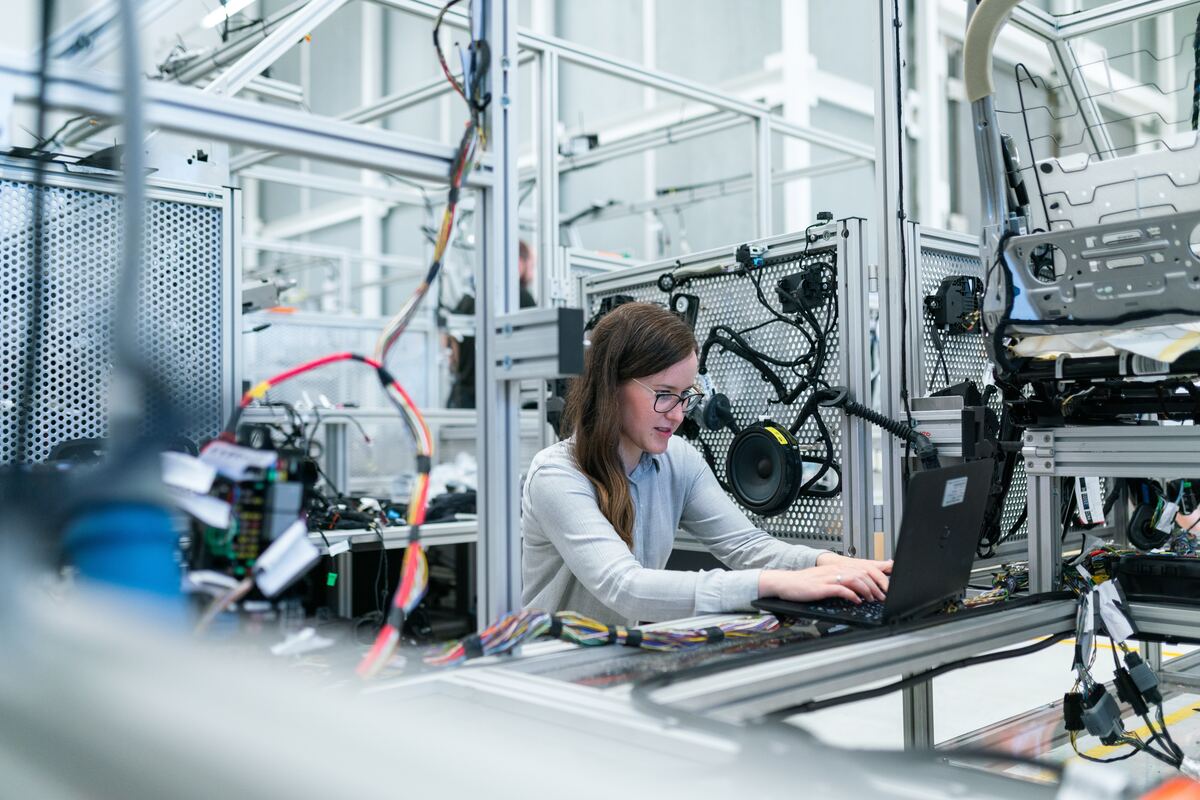In the dynamic landscape of the construction industry, the convergence of IoT in Co-Pilot for construction stands poised to revolutionize project management and operational efficiency. According to a report by McKinsey, the construction sector lags significantly behind other industries in productivity, with studies showing a staggering 98% of projects facing cost overruns or delays.
IoT offers a beacon of hope, enabling real-time monitoring of equipment, site conditions, and worker safety through interconnected devices and sensors. Co-Pilot technology enhances this capability by integrating IoT data with advanced analytics, providing actionable insights that optimize resource allocation and mitigate risks proactively.
This introduction sets the stage for exploring how IoT’s seamless integration with Co-Pilot for construction not only enhances safety and efficiency but also promises to reshape traditional construction practices. By embracing these innovations, construction firms can foster a paradigm shift towards smarter, more agile project management strategies, ultimately driving greater productivity and profitability in an increasingly competitive market.
Table of Contents
Understanding IoT in Co-Pilot for Construction
Understanding IoT in Co-Pilot for construction is pivotal in modernizing the construction industry. IoT refers to interconnected devices embedded with sensors and software that collect and exchange data over the internet. In construction, IoT enables real-time monitoring of equipment, environmental conditions, and workforce safety through connected sensors and devices.
Suggested article to read: What is IoT in Construction? Definition, Applications and Steps (2025)
Co-Pilot technology specifically enhances construction operations by integrating IoT data with advanced analytics and machine learning. It acts as a digital assistant, providing real-time insights into project progress, equipment performance, and safety metrics. By leveraging IoT in Co-Pilot for construction, firms can optimize resource allocation, improve efficiency, and mitigate risks effectively. This integration not only streamlines operations but also facilitates proactive decision-making, ultimately enhancing project outcomes and ensuring safer work environments.
Suggested article to read: The Ultimate Guide to IoT Sensor in 2025
As IoT continues to evolve, its synergy with Co-Pilot technology promises to revolutionize how construction projects are planned, executed, and managed in the coming years.

Benefits of IoT in Construction
IoT (Internet of Things) offers significant benefits to the construction industry by enhancing safety, efficiency, and cost-effectiveness. Firstly, IoT devices such as sensors and wearables enable real-time monitoring of construction sites, machinery, and workers’ health and safety conditions. This capability not only improves safety protocols but also reduces accidents by providing timely alerts and data-driven insights.
Secondly, IoT facilitates increased operational efficiency through automated processes, predictive maintenance of equipment, and optimized resource management. Construction firms can monitor equipment usage, track materials in real-time, and streamline workflows, thereby minimizing downtime and enhancing productivity.
Furthermore, IoT contributes to cost savings by optimizing energy consumption, reducing waste, and enabling predictive analytics for better budget planning and project management. By harnessing IoT technologies, construction companies can achieve higher project profitability while delivering projects on schedule and within budget constraints. Overall, IoT’s integration in construction promises to revolutionize industry practices by improving safety, efficiency, and financial outcomes.
Implementation Strategies
Implementing IoT in construction requires strategic planning and execution to maximize its benefits effectively:
- Needs Assessment: Begin by identifying specific areas where IoT can address challenges or improve efficiency, such as safety monitoring, equipment management, or environmental monitoring.
- Technology Selection: Choose IoT devices and platforms that align with project requirements and integrate seamlessly with existing systems. Consider factors like scalability, compatibility, and data security.
- Pilot Testing: Conduct small-scale trials to evaluate IoT solutions in real-world construction scenarios. Use feedback from pilots to refine implementation strategies and address any operational challenges.
- Training and Support: Provide comprehensive training to staff on using IoT devices and interpreting data. Ensure ongoing technical support to troubleshoot issues and optimize system performance.
- Data Management: Establish robust protocols for collecting, storing, and analyzing data generated by IoT devices. Implement data governance policies to ensure data integrity, security, and compliance with regulations.
- Collaboration: Foster collaboration between stakeholders, including contractors, engineers, and technology providers, to align goals and maximize project benefits.
By following these strategies, construction firms can successfully implement IoT solutions to enhance productivity, safety, and operational efficiency across projects.

Conclusion
The integration of IoT and Co-Pilot technology represents a transformative opportunity for the construction industry. By harnessing IoT’s capabilities in real-time monitoring, predictive analytics, and enhanced operational efficiency, construction firms can achieve substantial improvements in safety, productivity, and cost-effectiveness. Co-Pilot technology further amplifies these benefits by integrating IoT data with advanced analytics, providing actionable insights that empower informed decision-making and proactive risk management.
As construction projects become increasingly complex and demanding, the strategic implementation of IoT is essential. Through meticulous needs assessment, careful technology selection, and methodical pilot testing, firms can mitigate implementation challenges and optimize the performance of IoT solutions. Ongoing training and robust data management practices are crucial for sustaining these advancements and ensuring long-term success.
Looking ahead, the continued evolution of IoT and Co-Pilot technologies promises to revolutionize construction practices, setting new standards for efficiency, sustainability, and project outcomes. Embracing these innovations positions construction firms at the forefront of industry transformation, poised to deliver safer, more efficient projects that meet the demands of tomorrow’s built environment.
Suggested article for reading:
25 Best IoT Conferences and Events to Attend in 2025
13 Top IoT Companies in World (2025)
Resources:
Netguru | Coppernic | ASSIST-IoT | Keystride | Kyro AI | Microsoft
For all the pictures: Freepik



